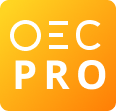Overview This page contains the latest trade data of Synthetic organic products used as luminophores. In 2023, Synthetic organic products used as luminophores were the world's 2432nd most traded product, with a total trade of $749M. Between 2022 and 2023 the exports of Synthetic organic products used as luminophores decreased by -28.9%, from $1.05B to $749M. Trade in Synthetic organic products used as luminophores represent 0.0033% of total world trade.
Synthetic organic products used as luminophores are a part of Synthetic Coloring Matter.
Exports In 2023 the top exporters of Synthetic organic products used as luminophores were United States ($222M), South Korea ($216M), China ($52M), Germany ($42.7M), and Japan ($37.6M).
Imports In 2023 the top importers of Synthetic organic products used as luminophores were China ($265M), South Korea ($184M), Indonesia ($35.3M), Netherlands ($13.9M), and United States ($12.5M).
Ranking Synthetic organic products used as luminophores ranks 583rd in the Product Complexity Index (PCI).
Description A luminophore is a chemical that emits light. Chemists use luminophores to emit light in a variety of colors, such as green, red, orange, blue, or purple. For example, chemists use luminophores to produce glow-in-the-dark paints that help people see in the dark. Chemists also use luminophores to make OLED light sources that can replace traditional light sources such as fluorescent or incandescent bulbs.

